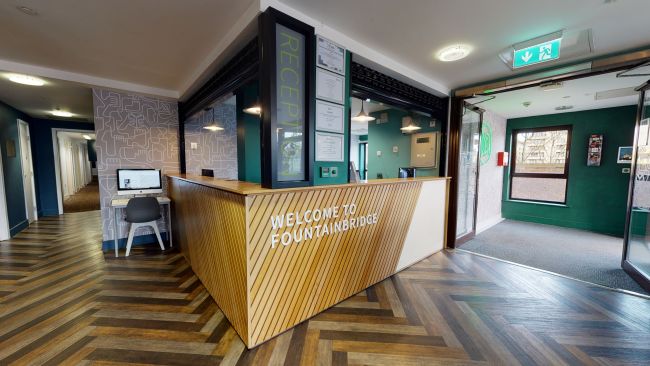How to open a student bank account
All the major UK banks offer some sort of student bank account, so you will have a lot of options to weigh up against each other. Their aim is, of course, to reel you in early in the hope of establishing a lifelong relationship, so you can expect a few tempting perks to be thrown in to sweeten the deal – a free railcard or Amazon Prime membership, for example.
While those things might be useful, it’s the numbers you need to be looking at – in terms of the interest you’ll get on your money (if any), and the terms of that all-important overdraft facility. Having what is likely to be an interest-free overdraft is the main advantage of choosing a student bank account over a standard current account.
What documents you need to open a student bank account
The standard things you will need to provide are proof of identity and proof of your status as a student (or student-to-be). For example:
- passport
- driving licence
- birth certificate
and a letter from your university confirming your place, or your UCAS confirmation letter. Some banks will also require proof of address.
You can apply online in most cases, so you should be able to get your account set up in advance if you are coming to study in the UK from overseas, although some banks may need you to visit a branch to provide documents. Your application will involve a check of your credit history, which is standard when you open a new bank account in the UK.
Student bank accounts in the UK
There are several banks with branches on the High Street in the UK, although as internet and mobile banking have become more popular, there are fewer of these around than there used to be. You may even find a branch of your chosen bank on your university campus. However, unless the personal touch is very important to you, being close to a branch probably doesn’t need to be a major factor in your choice of bank.
If you need to withdraw cash – again, less common nowadays – you can usually do this at other banks free of charge, as many use the same ATM network. Most other transactions can be carried out easily online or via the banks’ apps. Most banks also allow you to use services like Apple Pay, Samsung Pay and PAYM, a UK system which lets you send money to people using only their mobile phone number.
Their aim is to reel you in early in the hope of establishing a lifelong relationship, so you can expect a few tempting perks.
Among the banks you may see around your university city are Barclays, Lloyds, Santander, NatWest, RBS, Halifax, TSB and HSBC. All of these have a student account available.
Can I have two student bank accounts?
You are usually prohibited from holding more than one student bank account, but there’s nothing to stop you from holding another type of account, or even several, with a different bank if you feel it will be beneficial to you.
Here’s a look at what’s on offer from the main banks at time of writing.
HSBC – The HSBC Student Bank Account keeps things pretty simple, offering a guaranteed, interest-free overdraft of £1000 in year 1.You then have the option to request an increase to £2000 in year 2, and £3000 in year 3.
After you graduate, the account is converted to their Graduate Bank Account. If you are eligible for one, £1,500 of your overdraft will be interest-free during your first year after graduation, and £1,000 in your second year.
Barclays – The Barclays Student Additions Account offers a £500 fee-free overdraft on application, which can then be increased to £1000, £2000 and £3000 in years 1-3 respectively, subject to status. You can get cashback on purchases from partners which currently include people like Apple, Expedia and Boohoo, and add ‘packs’ of insurance for travelling or your tech devices (at an additional cost).
Barclays also offer an International Student Additions Account which offers most of the same features, but without the guaranteed overdraft.
Santander – The 123 Student Current Account from Santander also offers an interest-free overdraft, which can increase from £1500 to £2000 over the course of five years – but these amounts are not guaranteed. Currently, it offers a free 4-year railcard (for ages 16-25) and a range of retailer discounts, as well as monthly interest on balances – however, bear in mind interest rates may change over time. The 123 Student Account is only available to those permanently living in the UK.
NatWest / RBS – Like Barclays, both NatWest and RBS offer a Student Bank Account and an International Student Bank Account. The standard version offers up to £2000 interest-free overdraft, or £500 in your first term, and lets you choose from a National Express coach card, Amazon Prime student membership or a tastecard (which gives discounts at various restaurants) as a perk. The international version comes without the overdraft and with a £10 monthly fee.
TSB – The TSB Student Bank Account doesn’t go big on freebies, but it does offer monthly interest on balances of up to £500, and an interest-free overdraft. This starts at £500 for the first six months and can then be increased to £1000, and then £1500 in month ten. Again, this is subject to application and not guaranteed.
Halifax / Lloyds/ Bank of Scotland – The Halifax Student Current Account offers a fee-free arranged overdraft up to £1,500 for the length of your course, plus an extra year after you graduate, for up to a maximum of 6 years. There is also a modest amount of interest on credit balances, and when you are registered for online banking, you can also activate their ‘Cashback Extras’ discounts.
Lloyds and Bank of Scotland also offer the Cashback Extras perk (known as ‘Everyday Offers’ at Bank of Scotland), while their arranged overdrafts can rise to £2000 in years 4-6.
These are some of the established players, but if you don’t need the overdraft or a branch to visit, your choices are virtually unlimited, with ‘challenger’ banks and fintech companies like Monzo, Starling and Revolut among those shaking up the system. Many of these offer features designed to appeal to student-age customers, like budgeting functions and lower-cost international transfers and currency conversion.
Student bank account overdrafts
It’s worth noting that the overdraft limits advertised by the banks are often the maximum possible, rather than guaranteed, so what you are offered will depend on your credit history. If the limit can rise over time, you will need to request the increase and hope you are eligible for it – it won’t usually be granted automatically.
Also remember that if you do use your overdraft, you will need to repay that money eventually – so it’s worth checking out what happens with your overdraft interest rate after you graduate. It’s often the case that the benefits of a graduate account diminish over time, with interest rates rising. You should still be getting a favourable rate compared to the bank’s standard current account, but it’s worth checking this out ahead of time.
Bear in mind, the world of student bank accounts is competitive, so offers and interest rates can change at any time. Each bank will have its own terms and conditions, so take a look at their websites before you sign-up – and be sure to shop around before you decide which one is right for you.

